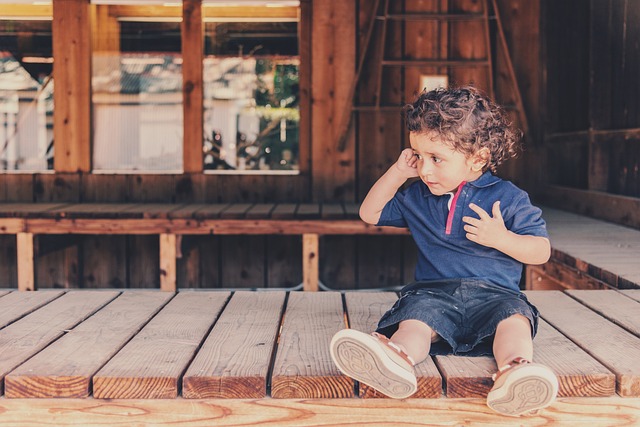As a parent, ensuring your little one’s safety is your top priority, especially when it comes to staircases. Stairs are one of the most hazardous areas in the home for babies and toddlers, making baby gates for stairs an essential babyproofing tool. Choosing the right gate for your stairs doesn’t just protect your child—it also provides peace of mind for you. In this guide, we’ll explore everything you need to know about baby gates for stairs, including types, installation tips, and the best features to look for.
Why Baby Gates for Stairs Are Important
Stairs pose a significant safety risk for babies and toddlers who are naturally curious and eager to explore their surroundings. A single misstep on the stairs could lead to serious injuries. Baby gates for stairs act as a secure barrier, preventing little ones from accessing this dangerous area without adult supervision.
Additionally, stair-specific baby gates are designed to handle the unique challenges of this space. Unlike standard gates, they offer added stability and features to ensure they stay firmly in place, even with active children in the home.
Types of Baby Gates for Stairs
When choosing a baby gate for your staircase, it’s essential to understand the different types available. Each type serves a specific purpose and suits various home layouts.
1. Hardware-Mounted Baby Gates
Hardware-mounted baby gates are the safest and most reliable option for staircases. These gates are securely attached to walls or banisters using screws, ensuring they won’t budge under pressure.
Key Features:
- Secure and sturdy design.
- Ideal for the top of stairs.
- Swing-open functionality for easy adult access.
Pros:
- Provides maximum safety for high-risk areas.
- Won’t be dislodged by pushing or pulling.
Cons:
- Requires drilling into walls or banisters.
- Less portable compared to other gate types.
Best for: Top of stairs or areas with steep descents.
2. Pressure-Mounted Baby Gates
Pressure-mounted gates are a convenient, tool-free option for areas like the bottom of stairs. They rely on tension between walls or banisters to stay in place.
Key Features:
- No drilling required.
- Quick and easy installation.
- Can be moved to other locations as needed.
Pros:
- Great for renters or temporary setups.
- Less invasive to walls or banisters.
Cons:
- Not recommended for the top of stairs.
- May not hold up against forceful pushing.
Best for: Bottom of stairs or temporary use.
3. Retractable Baby Gates
Retractable baby gates are a sleek and versatile choice for staircases. They feature a mesh barrier that rolls up when not in use, saving space and providing a minimalist aesthetic.
Key Features:
- Space-saving design.
- Adjustable for different widths.
- Suitable for both top and bottom of stairs with proper installation.
Pros:
- Blends seamlessly with modern décor.
- Easy to store when not in use.
Cons:
- May not be as durable as hardware-mounted gates for heavy use.
Best for: Parents looking for a stylish, space-efficient solution.
Features to Look for in Baby Gates for Stairs
To ensure you’re choosing the best baby gate for your staircase, consider the following features:
- Height: Opt for a gate that’s at least 30 inches tall to prevent your child from climbing over.
- Width: Measure your stairway to ensure the gate fits securely. Many gates offer extensions to accommodate wider spaces.
- Swing Direction: For top-of-stairs gates, choose a model that swings open away from the stairs to prevent accidental falls.
- Durability: Look for gates made of sturdy materials like metal or high-quality wood.
- Locking Mechanism: A secure, easy-to-use locking system is essential for safety and convenience.
- Certifications: Check for JPMA (Juvenile Products Manufacturers Association) certification to ensure the gate meets safety standards.
Installation Tips for Stair Baby Gates
Proper installation is key to ensuring your baby gate performs its job effectively. Here are some tips for a secure setup:
- Follow the Instructions: Always read and follow the manufacturer’s installation guide carefully.
- Secure to Studs: When installing hardware-mounted gates, ensure they’re screwed into wall studs for maximum stability.
- Use Banister Adapters: If your staircase has banisters, use adapters to avoid drilling directly into them.
- Test the Gate: Before trusting the gate with your child, test its strength and locking mechanism thoroughly.
Final Thoughts
When it comes to babyproofing your home, baby gates for stairs are non-negotiable. Whether you choose a hardware-mounted gate for the top of the stairs or a pressure-mounted option for the bottom, the right baby gate can make all the difference in keeping your little one safe.
By understanding the different types of gates and their features, you can choose a solution that fits your home, lifestyle, and safety needs. Remember, a secure baby gate is more than just a barrier—it’s a way to protect your child and give you peace of mind as they explore their world.

